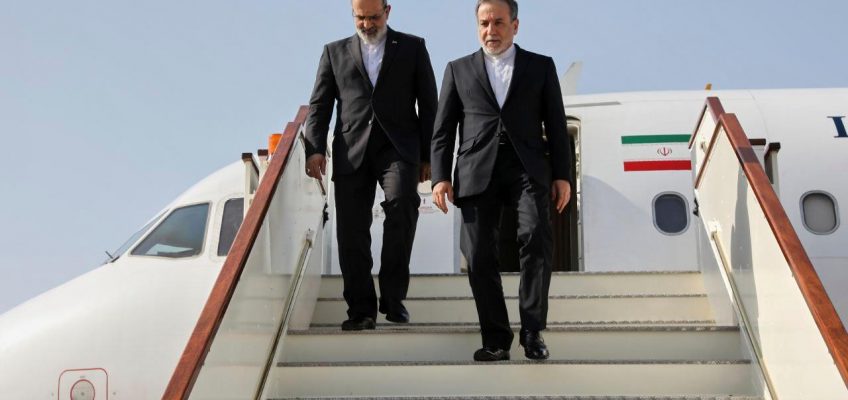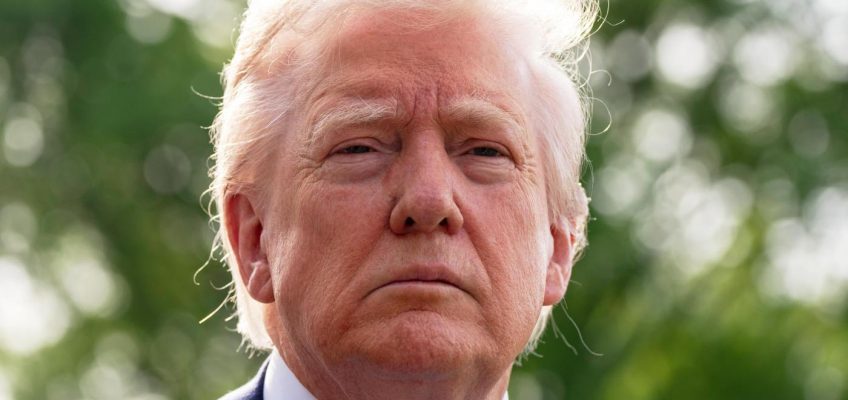By JON GAMBRELL
MUSCAT, Oman (AP) — Negotiations between Iran and the United States over Tehran’s rapidly advancing nuclear program will return Saturday to the secluded sultanate of Oman, where experts on both sides will start hammering out the technical details of a possible deal.
The talks seek to limit Iran’s nuclear program in exchange for the lifting of some of the crushing economic sanctions the U.S. has imposed on the Islamic Republic closing in on half a century of enmity. U.S. President Donald Trump has repeatedly threatened to unleash airstrikes targeting Iran’s program if a deal isn’t reached. Iranian officials increasingly warn that they could pursue a nuclear weapon with their stockpile of uranium enriched to near weapons-grade levels.
Neither Iran nor the U.S. has offered any explanation on why the talks will return to Muscat, the Omani capital nestled in the Hajar Mountains. Oman has been a mediator between the countries. Last weekend’s talks in Rome offered a more-equal flight distance between Iranian Foreign Minister Abbas Araghchi and U.S. Mideast envoy Steve Witkoff, who are leading the negotiations.
But Rome remains in mourning after the death of Pope Francis, whose funeral will be Saturday. And Iranian state television, in covering last weekend’s talks, complained at length on air about the “paparazzi” gathered across the street from the Omani Embassy in Rome’s Camilluccia neighborhood.
Iranians on Friday in Tehran remained hopeful the talks could be successful, as the Iranian rial has rebounded from historic lows.
“It’s OK to negotiate, to make the nuclear program smaller or bigger, and reach a deal,” Tehran resident Farzin Keivan said. “Of course we shouldn’t give them everything. After all, we’ve suffered a lot for this program.”
‘Peaceful use of nuclear energy’
The Muscat talks come as Iran appears to have lined up Chinese and Russian support. Araghchi traveled to Moscow last week and this week visited Beijing.
On Thursday, Chinese, Iranian and Russian representatives met the head of the International Atomic Energy Agency, the United Nations’ nuclear watchdog that likely will verify compliance with any accord like it did with Tehran’s 2015 nuclear deal with world powers. That deal included China and Russia, as well as France, Germany and the United Kingdom, in addition to Iran and the U.S.
However, Iran has greatly restricted the IAEA’s inspections — leading to fears internationally that centrifuges and other nuclear material could be diverted.
The IAEA offered no readout from the talks, but China’s state-run Xinhua news agency on Friday described the three nations as saying the agency has “the necessary potential and expertise to contribute constructively to this process.”
“China, Russia and Iran emphasized that political and diplomatic engagement based on mutual respect remains the only viable and practical path for resolving the Iran nuclear issue,” the report said. It added that China respects Iran’s “right to the peaceful use of nuclear energy.”
The Trump administration has kept France, Germany and the U.K. out of its direct negotiations with Iran, something similarly reflected in Witkoff’s negotiations with Russia over ending its war on Ukraine. Witkoff traveled Friday to Moscow ahead of Saturday’s meeting in Muscat.
Araghchi meanwhile has said he’s open to visiting Berlin, London and Paris to discuss the negotiations.
“The ball is now in the E3’s court,” Araghchi wrote on the social platform X on Thursday, using an acronym for the countries. “They have an opportunity to do away with the grip of Special Interest groups and forge a different path.”
U.S. stance on enrichment hardens
Two Iranian deputy foreign ministers, Majid Takht-e Ravanchi and Kazem Gharibabadi, are expected to lead Tehran’s expert team, the semiofficial Tasnim news agency reported. Takht-e Ravanchi took part in the 2015 nuclear talks, while Gharibabadi as well as been involved in atomic negotiations.
The U.S. technical team, which is expected to arrive in Oman on Friday, will be led by Michael Anton, the director of U.S. Secretary of State Marco Rubio’s policy planning staff. Anton does not have the nuclear policy experience of those who led America’s efforts in the 2015 talks.
However, he was an early supporter of Trump, describing the 2016 election as a “charge the cockpit or you die” vote. “A Hillary Clinton presidency is Russian Roulette with a semi-auto,” Anton wrote. “With Trump, at least you can spin the cylinder and take your chances.” He also criticized “Iran sycophancy” in the same essay.
Rubio, speaking on a podcast released this week, also kept up a Trump line that Iran needed to stop its enrichment of uranium entirely.
“If Iran wants a civil nuclear program, they can have one just like many other countries can have one, and that is they import enriched material,” Rubio said.
However, former CIA director Bill Burns, who took part in the secret negotiations that led to the 2015 nuclear deal, expressed skepticism Iran would give up its program like Libya did in 2003.
“I don’t personally think that this Iranian regime is going to agree to … zero domestic enrichment,” Burns said in a talk Monday at the University of Chicago. “To hold out for the Libya model is virtually to ensure that you’re not going to be able to reach an agreement.”
Iran ‘on high alert’
But Iran has insisted that keeping its enrichment is key. Witkoff also has muddied the issue by first suggesting in a television interview that Iran could enrich uranium at 3.67%, then later saying that all enrichment must stop.
Meanwhile, one more wildcard is Israel, whose devastating war on Hamas in the Gaza Strip grinds on. Trump initially announced the Iran talks with Prime Minister Benjamin Netanyahu at his side. But Israel, which for years has targeted Iran’s nuclear program with attacks on its facilities and scientists, has kept open the possibility of airstrikes to destroy Tehran’s enrichment sites.
On Monday, Israel’s military conducted drills preparing for possible new Iranian missile attacks, the country’s public broadcaster KAN reported.
“Our security services are on high alert given past instances of attempted sabotage and assassination operations designed to provoke a legitimate response,” Araghchi wrote on Wednesday in a post on X.
Associated Press writer Amir Vahdat in Tehran, Iran, contributed to this report.
The Associated Press receives support for nuclear security coverage from the Carnegie Corporation of New York and Outrider Foundation. The AP is solely responsible for all content.




